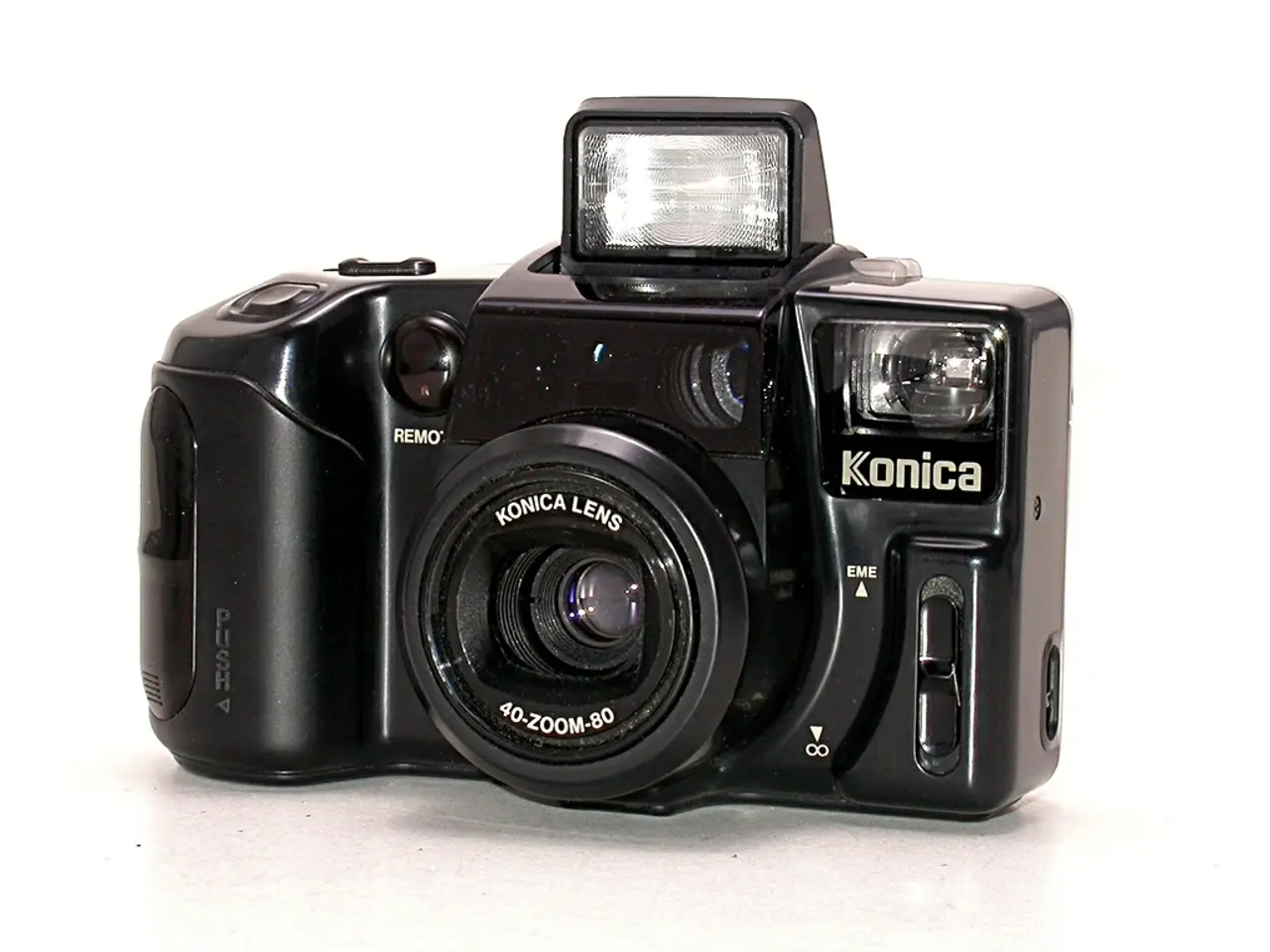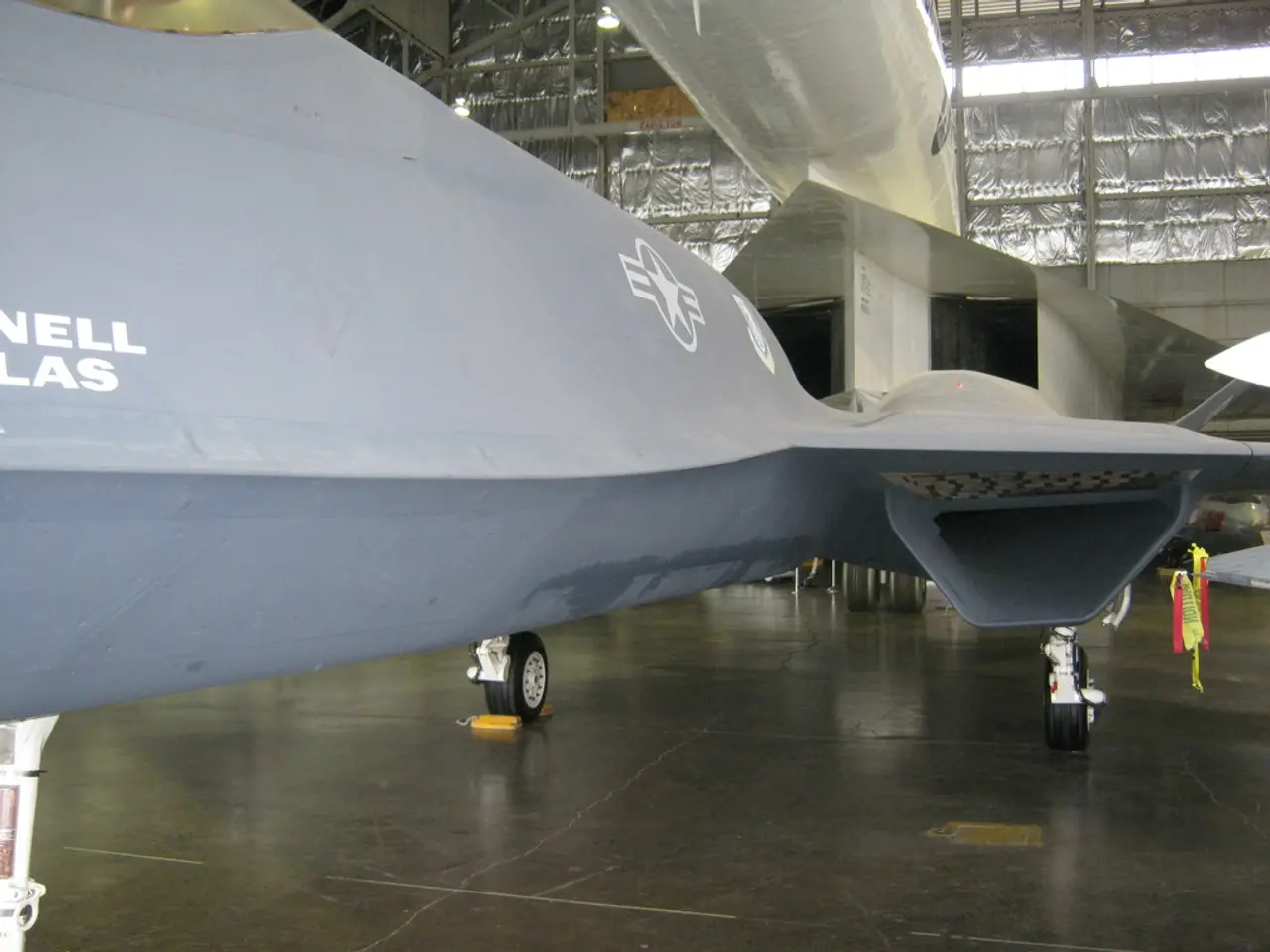Kodak's groundbreaking creation: Introducing the world's first digital camera
In 1975, a groundbreaking invention was born at Eastman Kodak, marking the beginning of a digital photography revolution. Steven Sasson, an engineer at the company, developed the first self-contained digital camera, a device that would change the way we capture and store images forever.
Sasson's journey began in 1974 when he was tasked with exploring the potential of a new image sensor technology, the charged-coupled device (CCD). With full autonomy, Sasson crafted a camera that combined a Super 8 movie camera lens, 16 nickel-cadmium batteries, an analog/digital converter, a CCD sensor, and multiple circuit boards. The resulting device captured a black-and-white image at 100x100 pixels (0.01 megapixels), storing it digitally on a magnetic cassette tape.
The first photograph, taken in December 1975, depicted a fellow technician named Joy Marshall. The image, though no longer in existence, marked a significant moment in history. The device weighed a hefty 3.6 kg and took 23 seconds to store the image on tape and another 30 seconds to display it on a TV screen.
Following this innovation, Sasson continued to push the boundaries of digital imaging, and in 1989 he and colleague Robert Hills developed the first self-contained digital single-lens reflex (DSLR) camera.
Despite Sasson's breakthrough, Kodak's focus on protecting film sales initially limited the adoption of digital photography. By 1995, digital pioneers like Kodak had been eclipsed by competitors such as Sony, Apple, and Canon.
Key events in the timeline of digital camera history include:
- 1974: Sasson begins work to explore CCD for digital imaging at Kodak.
- December 1975: Sasson completes and demonstrates the first digital camera, capturing and storing images digitally.
- 1989: Sasson and Robert Hills create the first self-contained digital SLR camera.
The charge coupled device (CCD) was a crucial component in the development of digital cameras. The CCD technology was pioneered by William Boyle and George E Smith, who developed the Charge Bubble Device in 1969, an early form of the CCD. This device could capture a two-dimensional pattern of light and transfer it into an electronic signal.
The first digital camera's image quality was poor, not posing a threat to the quality of pictures produced by 35mm film or 110 snapshot cameras of the time. However, this humble beginning laid the groundwork for the future of digital photography, decades before it became ubiquitous.
In 2012, Sasson received the British Royal Photographic Society's Progress Medal, and in 2009, he was awarded the American National Medal of Technology and Development. Though Sasson's invention was not immediately embraced, its impact on the world of photography is undeniable.
References:
[1] The New York Times. (2013, October 23). Steven Sasson, Inventor of Digital Camera, to Receive Progress Medal. Retrieved from https://www.nytimes.com/2013/10/24/business/media/steven-sasson-inventor-of-digital-camera-to-receive-progress-medal.html
[3] The Guardian. (2013, October 23). The man who invented the digital camera. Retrieved from https://www.theguardian.com/technology/2013/oct/23/man-who-invented-digital-camera-steven-sasson
Gadgets like the first digital camera, invented by Steven Sasson in 1975, were the fruits of groundbreaking technology advancements. The technology used, such as the charged-coupled device (CCD) and its precursor, the Charge Bubble Device, played a significant role in the development of these digital devices.




